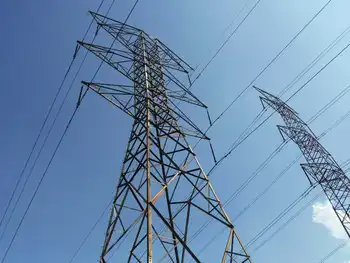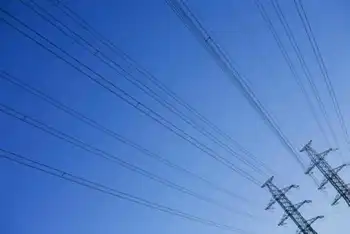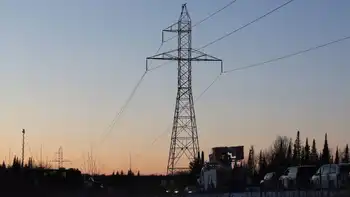Post-Enron, Washington utility cultivates own energy
By Associated Press
Protective Relay Training - Basic
Our customized live online or in‑person group training can be delivered to your staff at your location.

- Live Online
- 12 hours Instructor-led
- Group Training Available
After being burned by market manipulations that sent electricity prices soaring in 2000-01, Snohomish County Public Utility District is cultivating its own locally grown energy.
This year, it received nearly $1 million from the federal government for a pilot project to install tidal turbines in Puget Sound and to test-drill for geothermal hot spots in the region.
The utility recently launched a $1 million program to help customers install solar roof panels and solar water heaters. And it's breaking ground this fall on a small hydroelectric dam on a creek in the foothills of the Cascades.
"It's not a sleepy little district," said Neil Neroutsos, a spokesman for the PUD, which provides power to 320,000 customers north of Seattle. "We're really choosing our destiny."
The utility is exploring new energy sources with the aggressiveness it went after bankrupt energy giant Enron.
In 2004, as part of its legal fight with Enron, Snohomish PUD released profanity-laced tapes of Enron traders conspiring to steal money from "Grandma Millie."
At the height of the West Coast energy crisis in 2001, the utility had signed a contract with Enron to buy power at sky-high prices. As Enron collapsed that year, the utility canceled the contract, saying Enron's fraudulent practices voided the agreement. Enron sued and federal regulators ruled that Snohomish didn't have to pay. On appeal, the parties settled out of court and Snohomish paid Enron $18 million, a fraction of $180 million it would have been liable for.
"We all learned some lessons in terms of being less exposed to the markets," Neroutsos said.
While it's unusual for utilities to develop their own renewable energy, rather than contracting for power, it's becoming much more common, said Charlie Kubert, project director of the nonprofit Clean Energy Group. "There's beginning to be a shift in this direction."
Utilities in California, Iowa and Kansas own wind or solar farms.
"It's a way we can control the operation, maintenance and upkeep of a facility. It's more stability," said Scott Drzycimski, a spokesman for Alliant Energy, which opened its own wind farm in Wisconsin in December.
About 28 states have renewable energy standards, and the Senate is debating a national mandate as it considers the House climate bill passed last month. Utilities would be required to produce at least 12 percent of their power from wind, solar and other renewable sources by 2020.
Washington state's mandate doesn't kick in for some time, but Snohomish is on its way toward meeting a 15-percent renewable energy requirement by 2020.
Snohomish gets about 80 percent of its power from the Bonneville Power Administration. The rest comes from wind, biomass, hydroelectric and landfill gas.
General manager Steve Klein says the utility wants to diversify its power supply to be less reliant on others, be more sustainable, create local jobs and reduce losses from transmission lines located outside its service area.
"These are resource options in our own backyard," he said.
Craig Collar, Snohomish's senior manager of energy resource development, said companies must tap a variety of energy resources.
"There is no one resource that's going to carry the ball for our needs," he said.
Last fall, Snohomish received $1.2 million from the U.S. Department of Energy for tidal energy research.
"Tidal is right in our backyard, close to where the load is," Collar said.
Officials working with the University of Washington and others have narrowed the location of the first pilot project to a spot in Puget Sound's Admiralty Inlet.
It's an energetic site with strong tidal flows, limited river influence and good location for transmission to the grid, said Jim Thomson, an oceanographer at UW's Applied Physics Lab.
Two turbines, rising about 20 meters from the seabed, would be installed in 2011, but researchers are still gathering data on aquatic life, water quality and velocity of currents.
We want to understand what environmental studies are needed "to do this in a responsible way," Thomson said. "We have to take a very measured approach."
The project is small, likely to produce less than 1 megawatt, or enough to power 700 homes, but could likely be expanded.
Meanwhile, the PUD has been gathering seismic and other data to tap into geothermal energy, or intense heat deep beneath the Earth. Its goal is to harness about 90 megawatts of power in 10 to 15 years.
While other states like California have long developed geothermal energy, the industry is relatively young in Washington, said Washington state geologist Dave Norman.
Next year, Snohomish plans to test drill shallow wells, about 1,500 feet or so deep, at two locations to determine how quickly heat increases with depth.
As with much of the exploration, including finding ways to store excess energy as hydrogen, Collar said, "the economics may or may not be there for a while, but we have to get our feet in the water."











